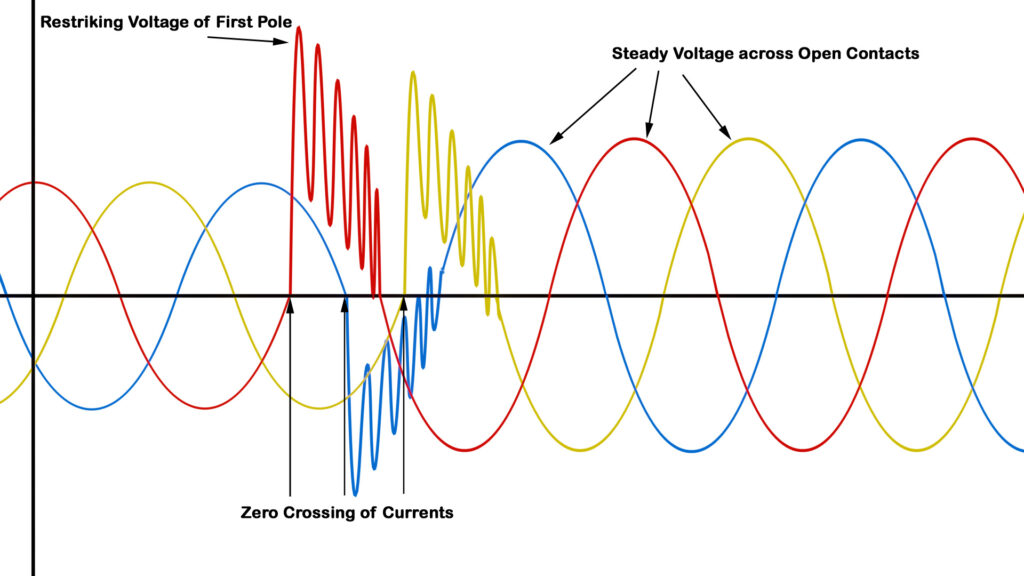Discover the First Pole to Clear Factor. How does the highest restriking voltage in the first-clearing pole, divided by phase-to-ground recovery voltage, impact circuit breaker performance?
123 characters (approx)
In an AC system, the phase difference between the currents of each phase is \(120^\circ\). This means the current of one phase is \(120^\circ\) apart from the current of the adjacent phase. Now, when there is an opening operation of a circuit breaker, all three poles of the circuit breaker open simultaneously. However, due to the \(120^\circ\) phase displacement between phases, the current waveform of one phase reaches its zero crossing before the others.
Current Clearing Sequence
We know that a circuit breaker interrupts the current during zero crossing. This means that during zero crossing, the medium between the CB contacts becomes deionized. Therefore, it reestablishes the dielectric strength. Ideally, the current will be finally interrupted at that point. Obviously, the same will not happen at the same time in the other two phases. The current continues through the other two phases by arcing. The circuit breaker is gang-operated. So, it keeps the open contact gap of the CB pole the same in all three phases.
First Pole
Let’s consider, in the red phase, that the arc is finally extinguished first. The current gets interrupted at the zero crossing. As a result, the restriking voltage will appear across the open CB contacts of red phase. However, zero crossing has not yet occurred in the yellow and blue phases, so the arc continues here.
Second Pole
At the next instant, the blue phase arc extinguishes at zero crossing. This produces another restriking voltage across its open contacts. The yellow phase arc continues because its current has not yet reached zero crossing.
Third Pole
After the zero crossing of the current in the yellow phase, it will also be interrupted. Now, restriking voltage will appear across the open CB contacts of the yellow phase.

After interrupting all three phase currents, a stable system voltage will be established across the open contacts of all three poles of the circuit breaker.
Now we come to the actual concept of First Pole to Clear Factor
We observe three overvoltage phenomena. The pole that interrupts the current first develops the first restriking voltage. Then, in the second pole, the same thing occurs, which means the restriking voltage appears across the contacts at current interruption. Finally, in the third phase, a restriking voltage appears across the open breaker contact during current interruption. So, restriking voltages do not occur simultaneously.
Tests show that the first pole to clear the current experiences a higher restriking voltage than the other poles. Dividing this highest restriking voltage by the system’s steady phase-to-ground voltage gives a key ratio for circuit breaker performance analysis. We refer to this ratio as the First Pole to Clear Factor. It equals the voltage of the first pole after current clearance divided by the phase-to-ground voltage after the entire current interruption.
